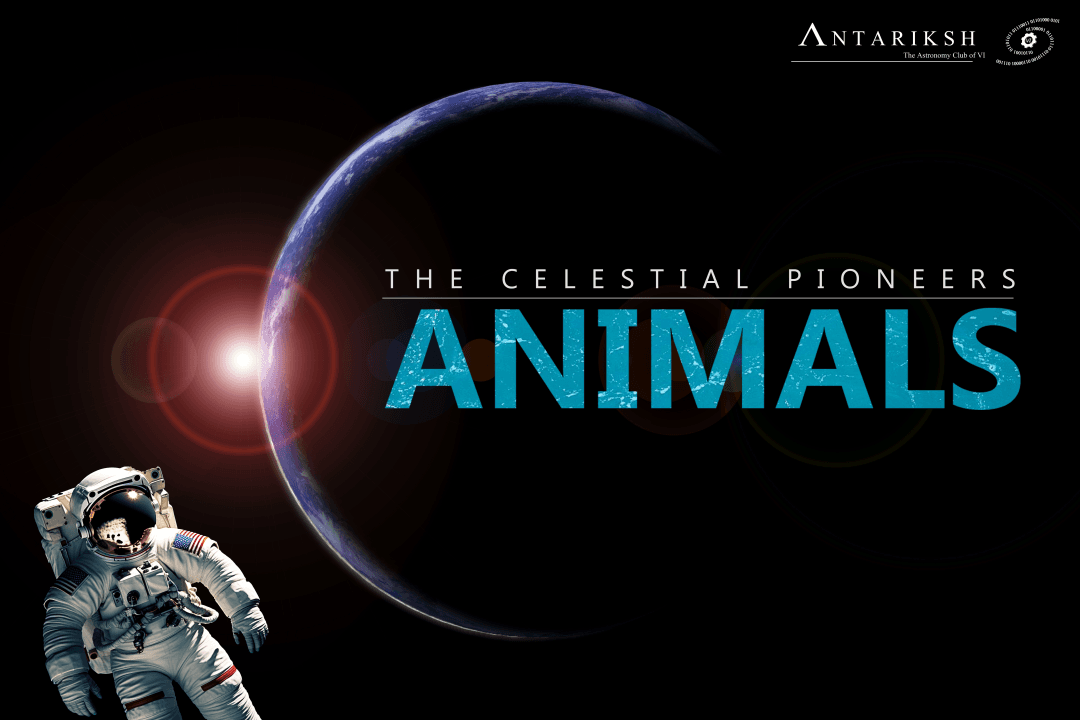
Formation and Types of Galaxies
On March 23, 2024, Shreyas from VIIT delivered an engaging talk on "Formation and Types of Galaxies" to 20 attendees. He highlighted significant historical moments in astronomy, including William Herschel's Milky Way illustration and Charles Messier's cataloguing of galaxies. The session featured the Hubble Classification System, categorizing galaxies as spiral, elliptical, and more. Shreyas addressed questions on the collision of the Milky Way and Andromeda galaxies despite universal expansion and compared the Big Bang theory with the Steady State theory. A lively group discussion followed, fostering collaboration among attendees and deepening their understanding of cosmic mysteries.
| Published on 22 Mar 2024

STAR PARTY, Velhe
| Published on 16 Mar 2024

The Celestial Pioneers : ANIMALS
"Early space missions involving animals stand as pivotal contributions to the astrobiology domain, offering unique insights into life beyond Earth. Selected for their biological parallels to humans, these celestial pioneers served as living experiments, unraveling many astro-biological mysteries.
The biological responses of animals provided crucial data for assessing life support systems, understanding the impacts of microgravity and cosmic radiation, and illuminating behavioral adaptations essential for survival in the extraterrestrial environment. These findings not only shaped space medicine but also became foundational in exploring the broader astro-biological implications of life's adaptability beyond our home planet.
While ethical considerations have prompted a shift in experimental methodologies, the enduring educational impact of animals in space missions continues to inspire future astrobiologists. The lessons learned from these early pioneers contribute to ongoing astro-biological research, influencing our understanding of the potential for life in the vast reaches of the cosmos."
| Published on 06 Mar 2024

A Visit to Scientific Heritage- GMRT...
On February 23, 2024, Antariksh Club organized an educational visit to the Giant Metrewave Radio Telescope (GMRT) in Khodad. The visit, attended by 35 participants, provided an in-depth look at radio astronomy through guided tours and technical sessions led by GMRT engineers. Participants explored the GMRT antenna array, control rooms, and learned about the advanced technology used in radio signal reception and processing. Insightful talks on GMRT’s history and impact on low-frequency radio astronomy were delivered by mentor Jameer Manur. The event offered a blend of learning, hands-on experience, and networking, sparking enthusiasm for future astronomy-related activities.
| Published on 22 Feb 2024

The Pivotal Role of Radio Astronomy in Revealing the Structure of the Milky Way.
This paper explores the pivotal role of radio astronomy in uncovering the structural complexities of the Milky Way galaxy. By utilizing radio telescopes to detect and analyze radio emissions from celestial objects, particularly neutral hydrogen, astronomers have been able to map the distribution of hydrogen across various regions of the galaxy. This has led to significant discoveries, including the identification of the spiral arms and the supermassive black hole Sagittarius A*. The findings underscore the importance of radio observations in advancing our understanding of galactic dynamics and the broader universe.
| Published on 18 Feb 2024

An Overview of Radio Astronomy
Gautam Kulkarni delivered an engaging internal talk on "An Overview of Radio Astronomy" at VIIT's EnTC Department, attended by 22 students. The presentation covered the historical milestones in radio astronomy, key radiation sources such as the 21 cm hydrogen line and pulsars, and various antenna types. Kulkarni explained collaborative observations through interferometry and introduced the Giant Metrewave Radio Telescope (GMRT). The session fostered active audience engagement, including a Q&A, and inspired students to explore careers in astronomy. The Antariksh Club thanks Kulkarni for his valuable insights and the attendees for their participation.
| Published on 16 Feb 2024